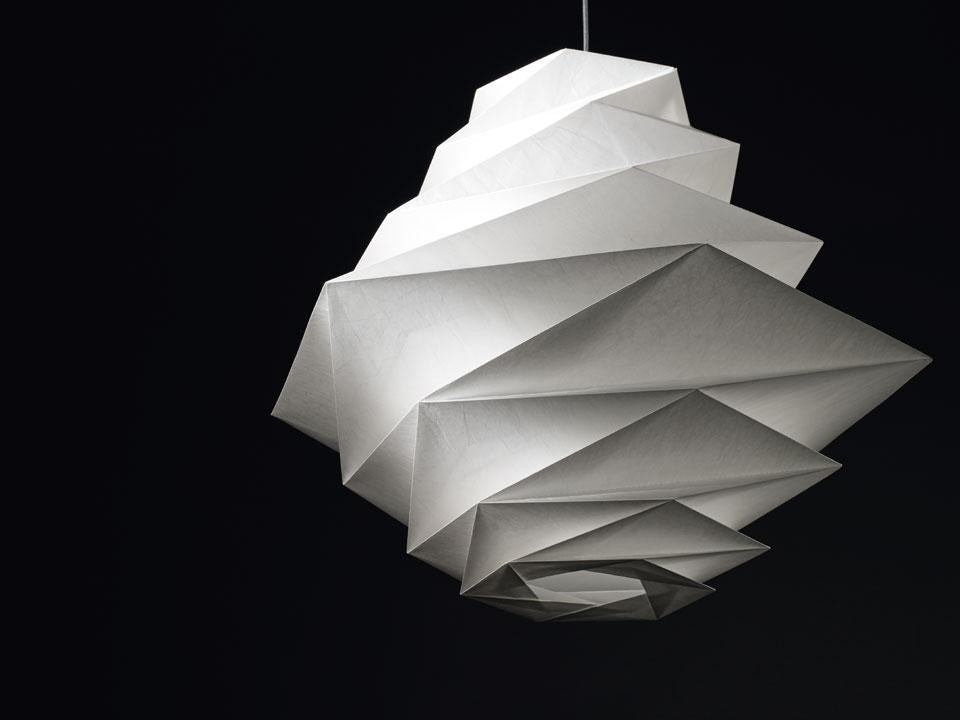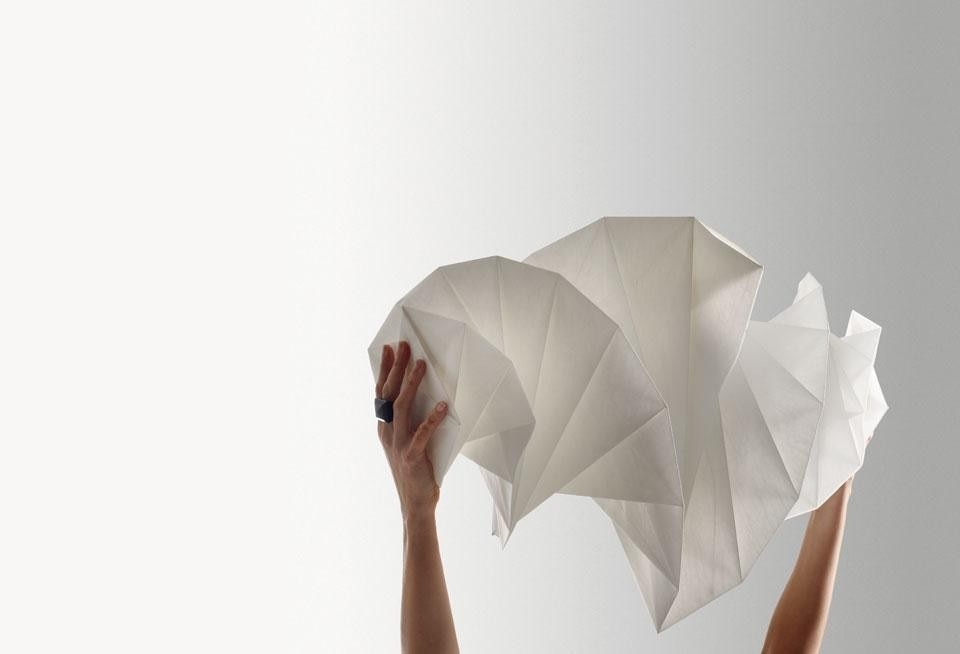With its variable forms pervaded by subtly luminous nuances, the In-Ei Issey Miyake collection of lamps made by Artemide produces intriguing variations of light and shade: a suffused, Japanese light, created through algorithmic design and the application of mathematical principles. "Seeing them is instant emotion; and as you get to know them, your astonishment and wonder mingle with an awareness of gazing into a future that we had thought was further off and not so splendid." Thus Ernesto Gismondi, president and founder of Artemide, introduces In-Ei, which in Japanese means "shadow", "nuance".
In his book Hidden Order, Yoshinobu Ashihara associates the Western culture of light with a treetop, and the Japanese aesthetic of shade with the lower part of the tree, its subterranean roots.
The Western culture appears to be an extrovert one, which loves and seeks light; whereas that of the Rising Sun is more introverted: on the one hand a predilection for sharp light and shade, on the other for nuances.
Perceptive quality
The whole project is a synthesis of creativity and mathematical analysis, based on a special fabric that can assume and maintain forms in 3D starting from an ordinary flat sheet. Although at first glance the material of which they are composed seems to be washi (the traditional Japanese paper), the lamps are actually made with a special fabric selected for its resistance and for its tactile texture, similar to that of washi paper.
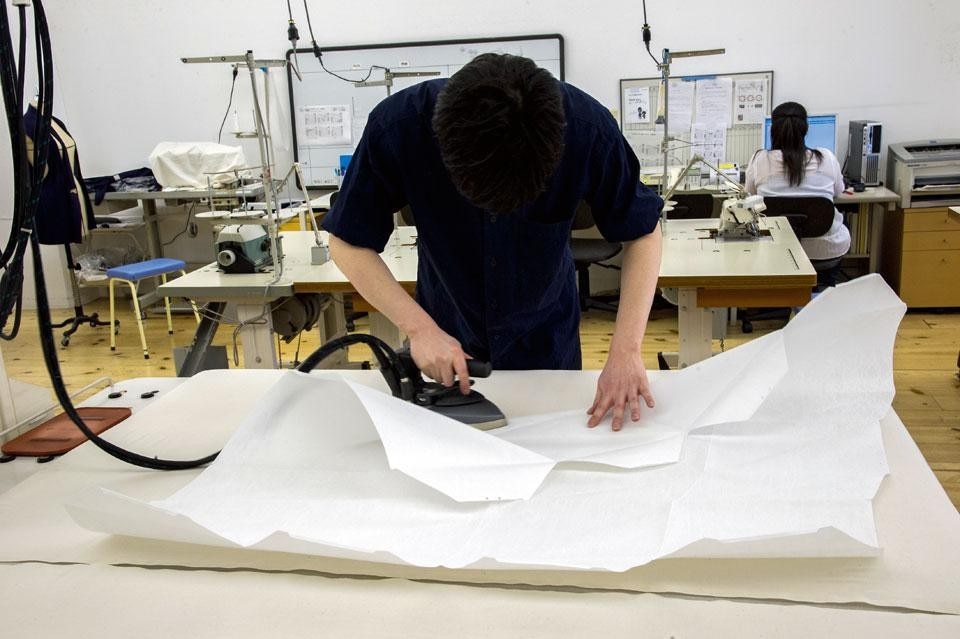
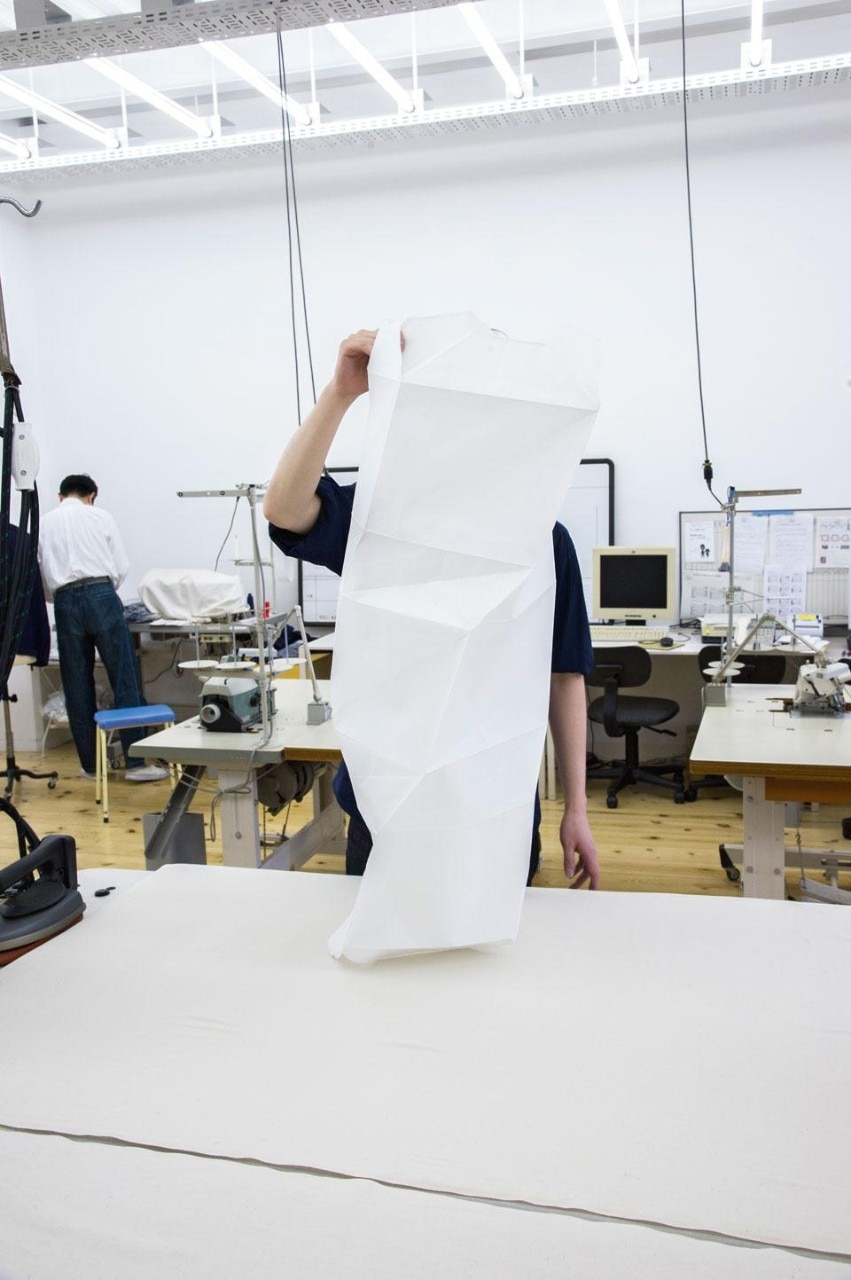
In-Ei is part of the "132 5" project, which Miyake has been developing through his Reality Lab, in collaboration with two engineers, an information technology scientist, four young individuals, and Jun Mitani, a university teacher of mathematics who is also an origami buff. The "1" refers to the single piece of fabric from which each creation is created; the "3" refers to three-dimensionality; the "2" stems from the fact that initially the fabric is folded into a two-dimensional shape; and the "5", which follows an empty space, refers to the metamorphosis of the folded forms.
The folds that give rise to the forms of the In-Ei lamps are created by a very complex process which, among other things, relies on ultrasound machines and an original technology patented by Miyake. Thanks to their material, these lamps perfectly maintain their form without necessitating any internal structure at all. The special process of press-ironing produces structural folds that are memorised by the fabric, thereby making the lamps extendible objects that can be refolded and stowed away in a flash.
In-Ei is part of the “132 5” project, which Miyake has been developing through his Reality Lab, with two engineers, an it scientist and a university teacher of mathematics who is also an origami buff
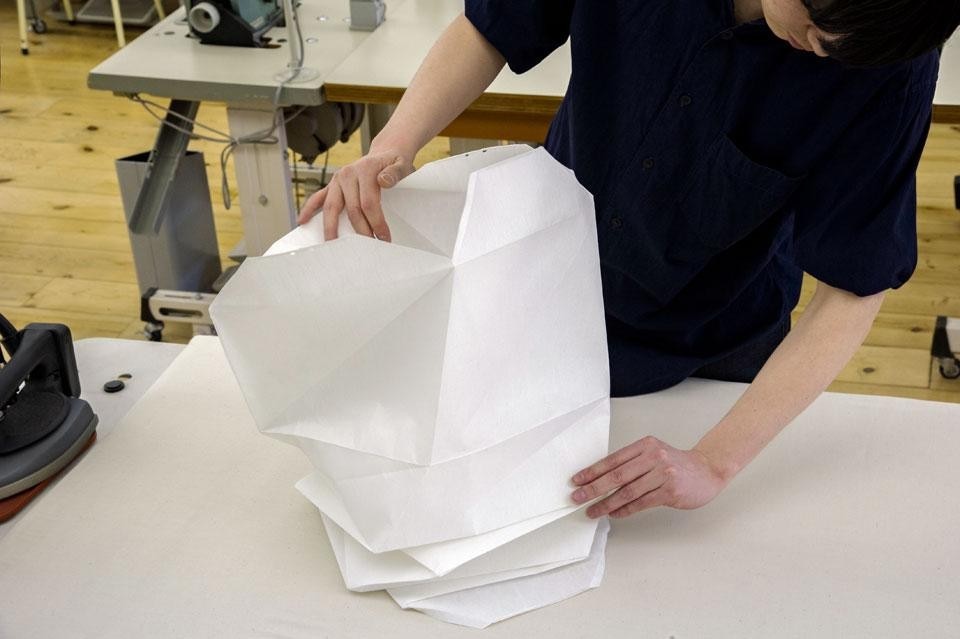
The affinities of outlook between Artemide and Miyake's Reality Lab also stem from the importance both attach to issues of sustainability. "In my projects, I never start from form, but always from the material. I never find myself associating a material with a form, but exactly the opposite. It is by starting from the available material that I 'compose'. When I don't have the material I want, I try inventing it." Not by chance, the fabric on which the design has been developed is an innovative material with an unusual capacity to diffuse light. A regenerated fibre entirely derived from PET bottles, it is the result of new industrial techniques that cut energy consumption and carbon dioxide emissions by 40 per cent. The highly evocative forms thus created are animated by Artemide led lights, today's most relevant technology in terms of sustainability.
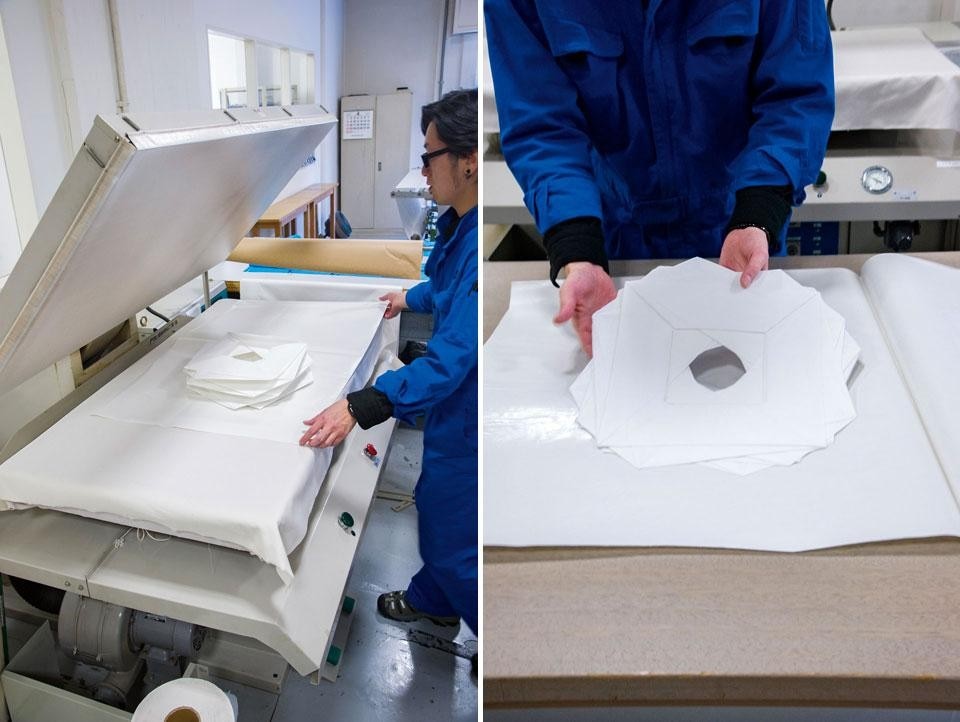
Ernesto Gismondi was once a missile engineer, but chose to believe more in the light emitted by bursts of fantasy than in that produced by the explosion of bombs. The spirit shown by Gismondi in his collaboration with Issey Miyake, a visionary designer and fine innovator, is the same as that devoted in the 1980s to his support for the objects produced by the Memphis Group's creative anarchy.
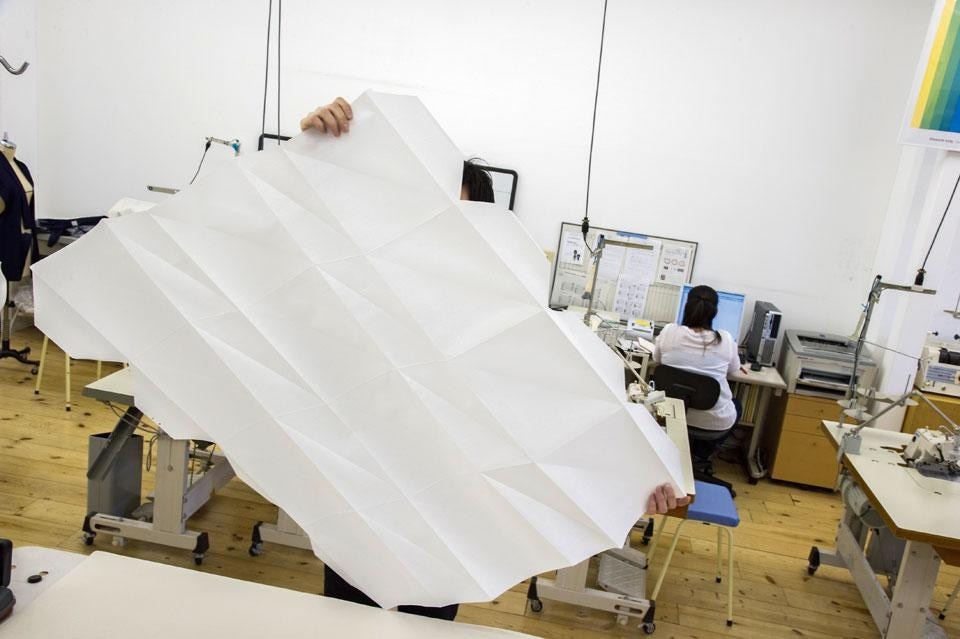
Miyake comes from Hiroshima, the same city as his friend and master Isamu Noguchi. "My school was on the other side of the Peace Bridge which Kenzo Tange commissioned Noguchi to design. Every day I used to cross that bridge on my bicycle, and every time I would think: Ah, this is design!"
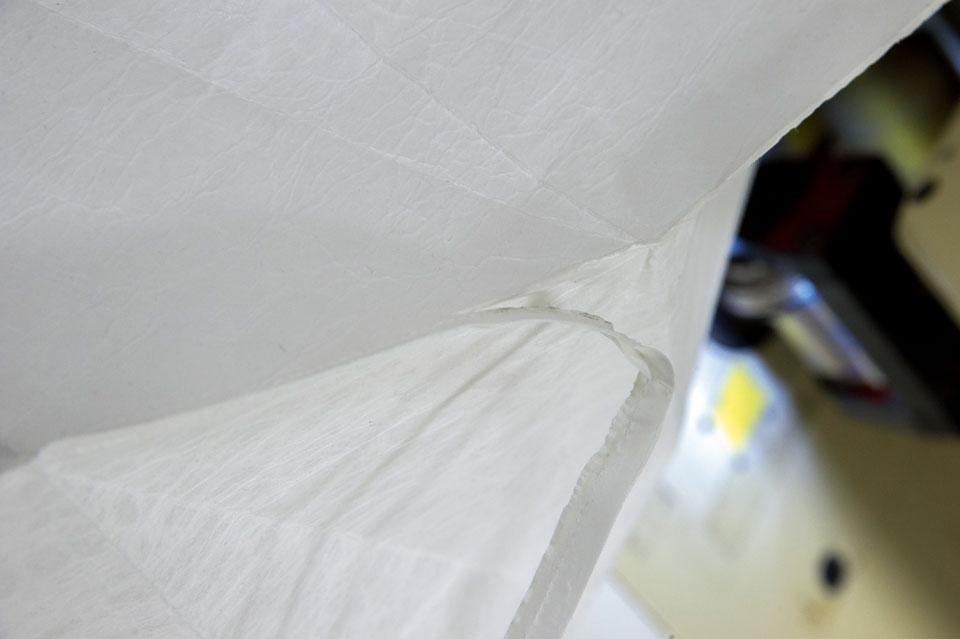
Dismantled and reassembled every 20 years, the Ise shrine is home to the Yata no Kagami, one of the three sacred treasures of Japan: a metal mirror reflecting the figure, not clearly but opaquely. Yukio Mishima wrote that it is not the mirror in itself that is sacred, but what it sends back, that is to say its reflection. Imbued with that same spirit is the In-Ei collection of lamps, which Miyake recounts by citing a passage from In Praise of Shadows: "We find beauty not in the thing itself but in the patterns of shadows, the light and the darkness, that one thing against another creates."
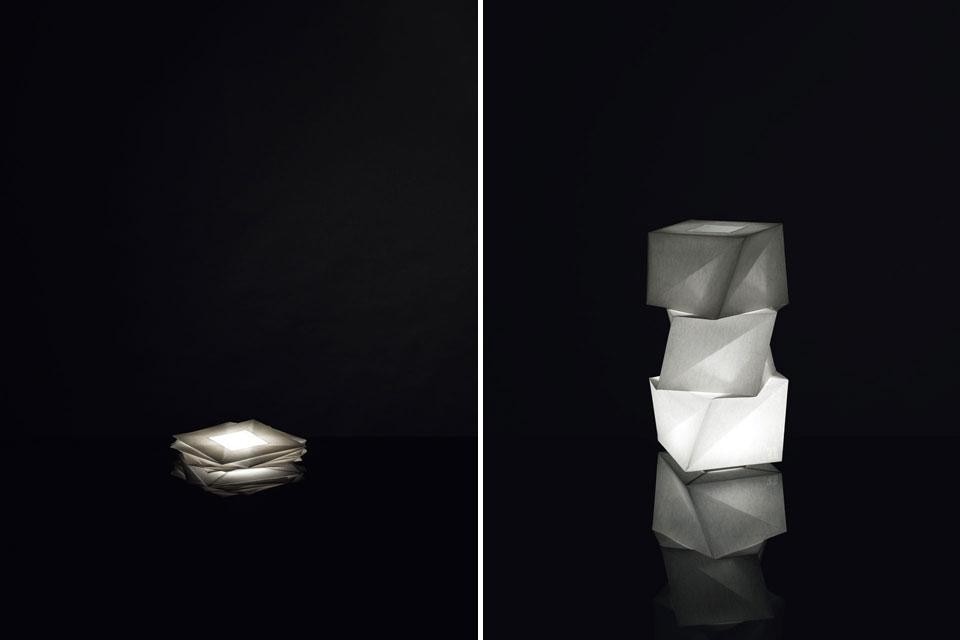
During our meeting, Issey Miyake speaks of his friend and master Isamu Noguchi. He maintains that the Akari collection by Noguchi cannot be compared to In-Ei, because the two are utterly different, both in their form and material and in their content. On the one hand, archaic forms are inspired by those of nature seen with the naked eye; on the other, forms are derived from the use of algorithmic design, hence from a reasoning about nature's innermost geometric but cellular code. These are two types of "organic", but different design. To continue this comparison, we have on one side Noguchi with traditional paper in need of a structure, and on the other Miyake with an ultra-innovative, self-supporting material.
Certainly, both are imbued with the same avantgarde spirit. But In-Ei is ahead, an offspring of our time. Miyake and Artemide together have scored a point in favour of the future.
